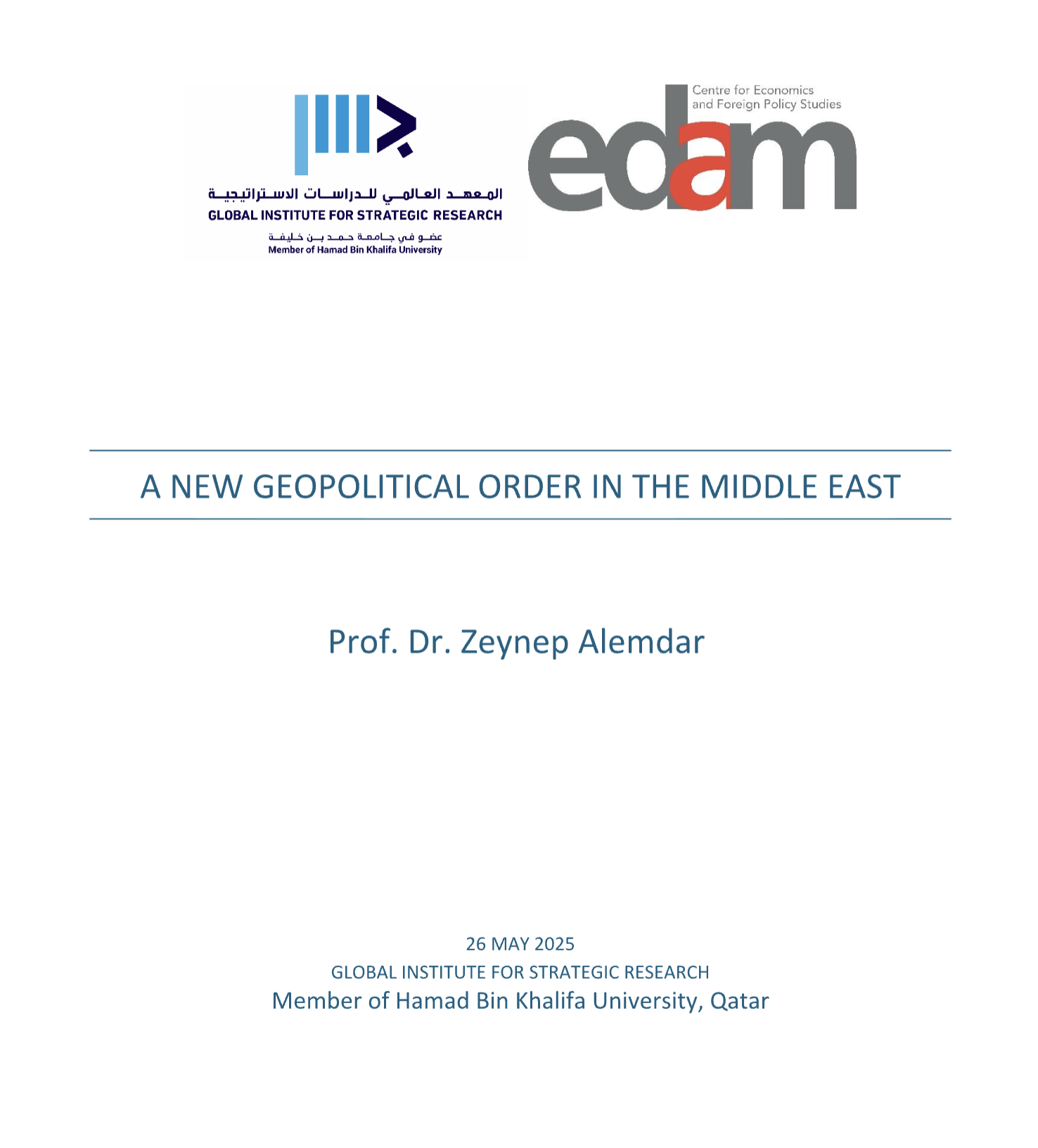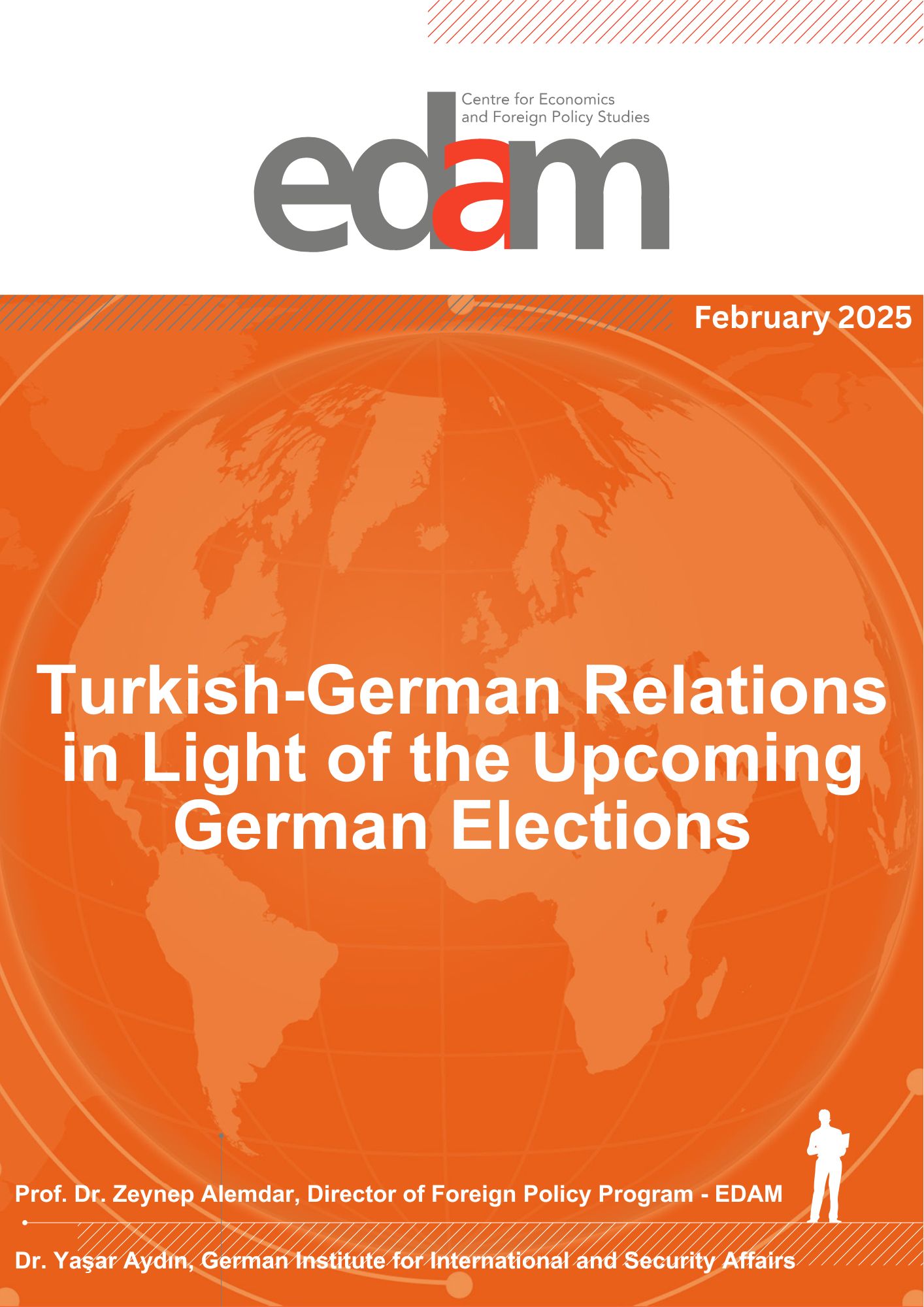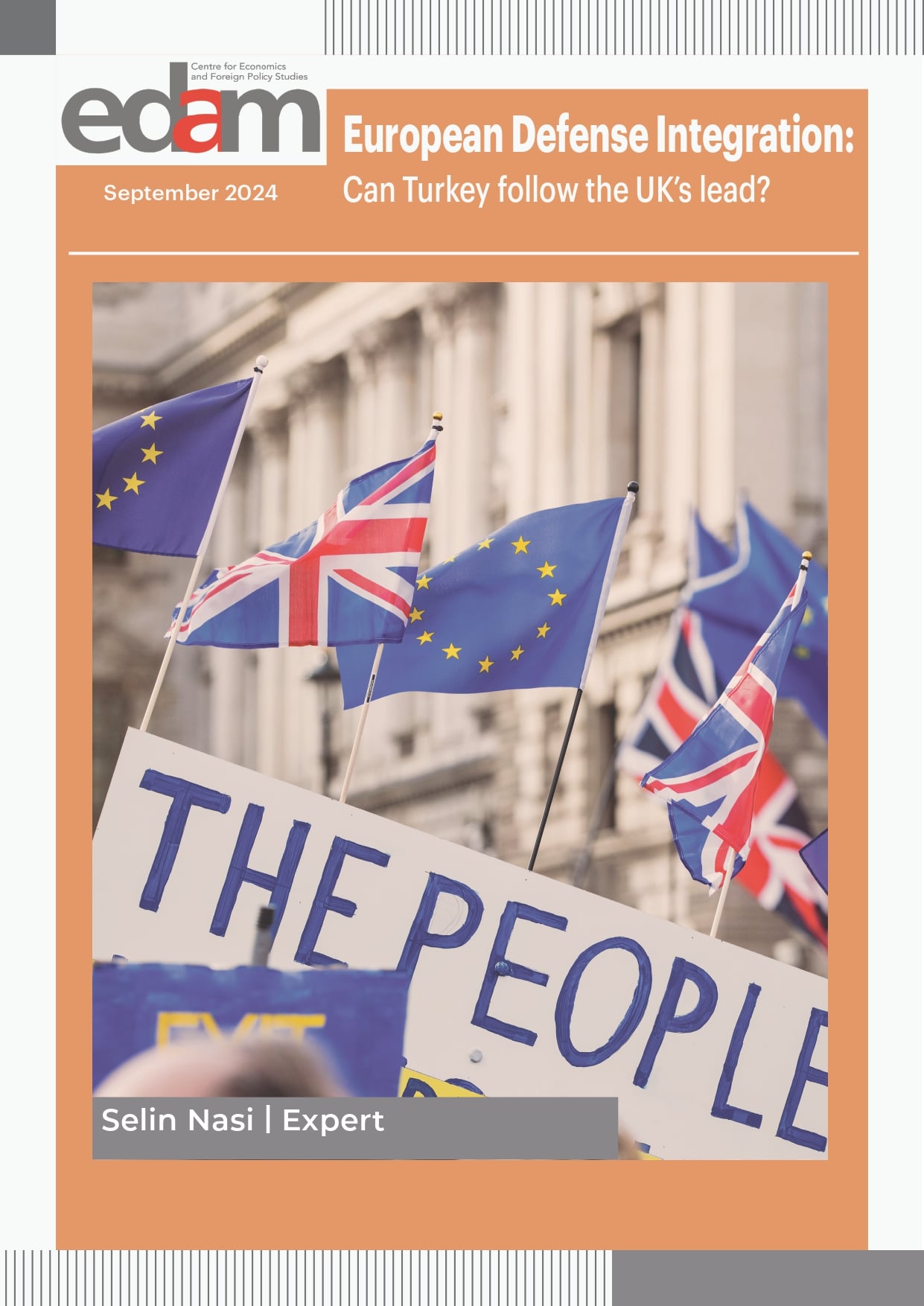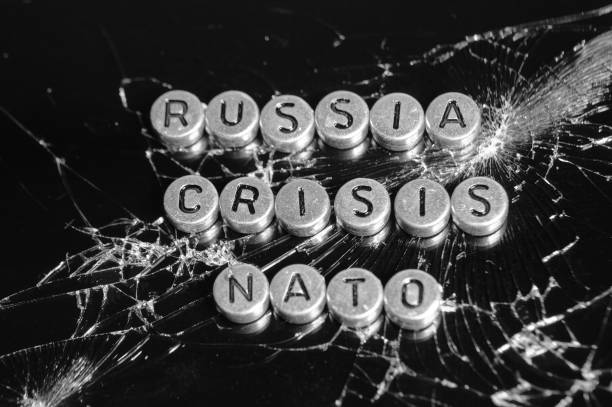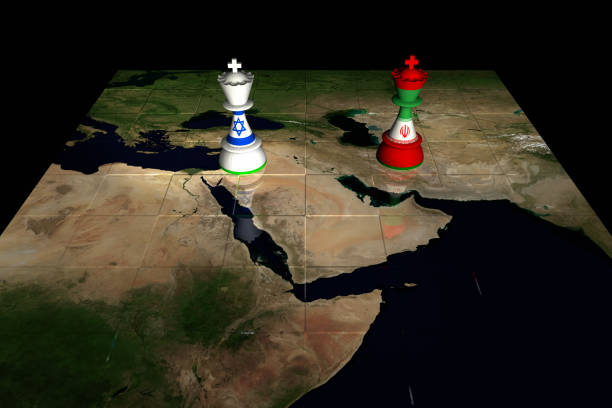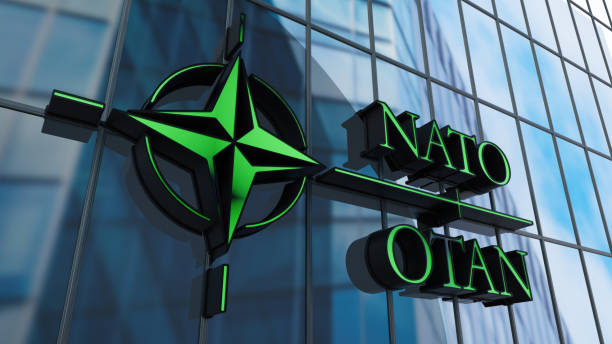After earlier efforts to halt the vertical proliferation of strategic arms had failed, the United States and the former Soviet Union agreed on 1 July 1968 to discuss limiting and reducing offensive and defensive (missile defense) strategic systems. After a six-month delay that Parties began serious discussions.
At the time, the United States had invested in a limited missile defense system to defend against a Chinese ballistic missile attack and an accidental missile launch. The Soviet strategic modernization programs were ongoing during the negotiations and the numbers of land based and submarine based launchers exceeded those of the United States. There was a fear that the USSR’s heavy ballistic missiles’ payload capacity (throw weight) could threaten the United States’ hardened missile silos. The U.S., however, was conducting a program to outfit its missiles with multiple independently targeted re-entry vehicles (MIRVs). MIRVs allow for the placement of multiple warheads on one missile. Thus, the United States had more warheads than the USSR.
During the negotiations, the United States and the USSR disagreed about the type of strategic weapon that should be included in the Treaty. The USSR wanted some limits on forward deployed systems, arguing that the definition of “strategic” should be any system capable of reaching the territory of the other side. This would have included American short range missiles deployed in NATO states, and excluded similar Soviet systems based in the Warsaw Pact countries. The U.S. insisted that such weapons should be addressed in a separate Treaty, arguing that the definition of “strategic” should only include intercontinental systems. The United States maintained that it had Treaty obligation in Europe and Japan, while the USSR’s allies were in its region. The differences made its difficult to reach an agreement on strategic equality and weapon definitions.
The Soviet side then asked to defer limits on strategic missiles and for the two sides to work towards an agreement that focused solely on missile defense. The U.S. argued that placing limits on missile defense, without similar limitations on offensive systems undermined the purpose of the SALT negotiations. The deadlock was finally broken on 20 May 1971. Washington and Moscow announced that an understanding had been reached to concentrate on a permanent Treaty to limit ABM systems, but at the same time to work out certain limitations on offensive systems, and to continue negotiations for a more comprehensive and long-term agreement on the latter. On 26 May 1972 President Nixon and General Secretary Brezhnev signed the Anti-Ballistic Missile Treaty and the Interim Agreement on strategic offensive arms at summit meeting in Moscow.
The Parties agreed not to start construction of additional fixed land-based intercontinental ballistic missile (ICBM) launchers after 1 July 1972; not to convert land-based launchers for light ICBMs, or for ICBMs of older types deployed prior to 1964 (Article 1), into land-based launchers for heavy ICBMs of types deployed after that time (Article 2); and to limit submarine launched ballistic missile (SLBM) launchers and modern ballistic missile submarines to the numbers operational and under construction on the date of signature of this Interim Agreement, and in addition to launchers and submarines constructed under procedures established by the Parties as replacements for an equal number of ICBM launchers of older types deployed prior to 1964 or for launchers on older submarines (Article 3).
The Parties agreed to the following terms for Article 3: The United States may have no more than 710 ballistic missile launchers on submarines (SLBMs) and no more than 44 modern ballistic missile submarines. The Soviet Union may have no more than 950 ballistic missile launchers on submarines and no more than 62 modern ballistic missile submarines.
Additional ballistic missile launchers on submarines up to the above-mentioned levels, in the United States — over 656 ballistic missile launchers on nu- clear-powered submarines, and in the USSR — over 740 ballistic missile launchers on nuclear-powered submarines, operational and under construction, may become operational as replacements for equal numbers of ballistic missile launchers of older types deployed prior to 1964 or of ballistic missile launchers on older submarines. The deployment of modern SLBMs on any submarine, regardless of type, will be counted against the total level of SLBMs permitted for the United States and the USSR.
The Parties agreed that the modernization and replacement of strategic offensive ballistic missiles and launchers covered by this Interim Agreement may be undertaken (Article IV); and the Parties agreed to continue active negotiations for limitations on strategic offensive arms (Article VII).
The Agreement allowed for both sides to verify that the agreement with “national technical means” (Satellites, aircraft, electronic, and seismic monitoring devices). Each Party agreed not to interfere with the national technical means of verification of the other Party operating in accordance with paragraph 1 of this Article, or use deliberate concealment measures that impede verification by national technical means of compliance with the pro-visions of this Interim Agreement.
The Parties agreed that both sides may only have two anti-ballistic missile sites. The deployment was to be restricted so that they could not be used to provide a nationwide missile defense or become the basis for developing one. The Treaty permits each side to have one limited ABM system to protect its capital and another to protect an ICBM launch area. The two sites defended must be at least 1,300 kilometers apart, in order to prevent the creation of any effective regional defense zone or the beginnings of a nationwide system. At each site there may be no more than 100 interceptor missiles and 100 launchers. Agreement on the number and characteristics of radars to be permitted had required extensive and complex technical negotiations, and the provisions governing these important components of ABM systems are spelled out are included in the Treaty’s “Agreed Statements”.
The U.S. and the USSR agreed to limit qualitative improvement of their ABM technology, and not to develop, test, or deploy ABM launchers capable of launching more than one interceptor missile at a time or modify existing launchers to give them this capability, and systems for rapid reload of launchers are similarly barred. These provisions, the Agreed Statements clarify, also ban interceptor missiles with more than one independently guided warhead.
There had been some concern over the possibility that surface-to-air missiles (SAMs) intended for defense against aircraft might be improved, along with their supporting radars, to the point where they could effectively be used against ICBMs and SLBMs, and the Treaty prohibits this. While further deployment of radars intended to give early warning of strategic ballistic missile attack is not prohibited, such radars must be located along the territorial boundaries of each country and oriented outward, so that they do not contribute to an effective ABM defense of points in the interior.
Further, to decrease the pressures of technological change and its unsettling impact on the strategic balance, both sides agree to prohibit development, testing, or deployment of sea-based, air-based, or space-based ABM systems and their components, along with mobile land-based ABM systems. Should future technology bring forth new ABM systems “based on other physical principles” than those employed in current systems, it was agreed that limiting such systems would be discussed, in accordance with the Treaty’s provisions for consultation and amendment.
The Treaty also provides for a U.S.-Soviet Standing Consultative Commission to promote its objectives and implementation. The commission was established during the first negotiating session of SALT II, by a Memorandum of Understanding dated 21 December1972. Since then both the United States and the Soviet Union have raised a number of questions in the Commission relating to each sides compliance with the SALT I agreements. In each case raised by the United States, the Soviet activity in question has either ceased or additional information has allayed U.S. concern.
Article XIV of the Treaty calls for review of the Treaty five years after its entry into force, and at five-year intervals thereafter. The first such review was conducted by the Standing Consultative Commission at its special session in the fall of 1977. At this session, the United States and the Soviet Union agreed that the Treaty had operated effectively during its first five years, that it had continued to serve national security interests, and that it did not need to be amended at that time.
The most recent Treaty review was completed in October 1993. Following that review, numerous sessions of the Standing Consultative Commission have been held to work out Treaty succession — to “multilateralize the Treaty — as a result of the break-up of the Soviet Union and to negotiate a demarcation between ABM and non-ABM systems
Pursuant to the Treaty’s withdrawal clause, the George W. Bush administration withdrew from the ABM Treaty on 13 December 2001. The Bush Administration claimed that the ABM Treaty prevented the United States from developing a missile defense system to defend against the threat of a missile launch from “rogue states”.
Pursuant to Article VII of SALT I, the United States and the Soviet Union began negotiations for further limitations on offensive strategic arms in November 1972. The Parties had intended to the replace the interim agreement (SALT I) with a long term Treaty that placed limits on strategic offensive weapons.
The Parties agreed to limit strategic offensive arms quantitatively and qualitatively, to exercise restraint in the development of new types of strategic offensive arms, and to adopt other measures provided for in this Treaty (Article I). Each Party undertook to limit intercontinental Ballistic Missiles (ICBM) launchers, submarine launched ballistic missiles (SLBM) launchers, heavy bombers, and air-to-surface ballistic missiles (ASBs) to an aggregate number not to exceed 2,400, and from 1 January 1981 strategic offensive arms referred to in paragraph 1 of this Article to an aggregate number not to exceed 2,250 and to initiate reductions of those arms which as of that date would be in excess of this aggregate number (Articles II and III).
The Parties undertook not to start construction of additional fixed ICBM launchers; not to relocate fixed ICBM launchers; not to convert launchers of light ICBMs or of ICBMs of older types deployed prior to 1964 into launchers of heavy ICBMs of types deployed after that time; in the process of modernization and replacement of ICBM silo launchers, not to increase the original internal volume of an ICBM silo launcher by more than 32 percent; not to supply ICBM launcher deployment areas with ICBMs in excess of a number consistent with normal deployment, maintenance, training, and replacement requirements; not to provide storage facilities for or to store ICBMs in excess of normal deployment requirements at launch sites of ICBM launchers (“normal deployment requirements” means the deployment of one missile at each ICBM launcher); not to develop, test, or deploy systems for rapid reload of ICBM launchers; not to have under construction at any time ICBM launchers, SLBM launchers, heavy bombers, and ASBMs in excess of numbers consistent with a normal construction schedule; not to develop, test, or deploy ICBMs with a launch-weight or a throw-weight greater than that of the heaviest of the heavy ICBMs deployed by either Party as of the date of signature of this Treaty; not to convert land-based launchers of ballistic missiles that are not ICBMs into launchers for launching ICBMs, and not to test them for this purpose; not to flight-test or deploy new types of ICBMs, that is, types of ICBMs not flight-tested as of 1 May 1979, (except that each Party may flight-test and deploy one new type of light ICBM); not to flight-test or deploy ICBMs of a type flight-tested as of 1 May 1979 with a number of re-entry vehicles greater than the maximum number of re-entry vehicles, with which an ICBM of that type has been flight-tested as of that date; not to flight-test or deploy ICBMs of the one new type permitted by the Treaty with a number of re-entry vehicles greater than the maximum number of re-entry vehicles, with which an ICBM of either Party had flight-tested as of 1 May 1979, (10); not to flight-test or deploy SLBMs with a number of re-entry vehicles greater than the maximum number of re-entry vehicles with which an SLBM of either Party has been flight-tested as of 1 May 1979, (14); not to flight-test or deploy ASBMs with a number of reentry vehicles greater than the maximum number of re-entry vehicles with which an ICBM of either Party has been flight-tested as of 1 May 1979, (10); not to deploy at any one time on heavy bombers equipped for cruise missiles capable of a range in excess of 600 kilometers (km) more than 28 such cruise missiles (Article IV).
The following sub-limits are included in the Treaty’s aggregate limits:
• Party undertakes to limit launchers of ICBMs and SLBMs equipped with MIRVs, ASBMs equipped with MIRVs, and heavy bombers equipped for cruise missiles capable of a range in excess of 600 kilometers to an aggregate number not to exceed 1,320.
• Each Party undertakes to limit launchers of ICBMs and SLBMs equipped with MIRVs, and ASBMs equipped with MIRVs to an aggregate number not to exceed 1,200
• Each Party undertakes to limit launchers of ICBMs equipped with MIRVs to an aggregate number not to exceed 820
The Treaty prohibited the flight-testing, including research and development, of cruise missiles capable of a range in excess of 600 km or ASBMs from aircraft other than bombers. It also prohibited the conversion of such aircraft into aircraft equipped for such missiles and the conversion of an aircraft other than bombers into an aircraft, which can carry out the mission of a heavy bomber (Article VII).
The Treaty prohibited development, testing, or deployment of ballistic missiles capable of a range in excess of 600 km for installation on waterborne vehicles other than submarines, or launchers of such missiles; fixed ballistic or cruise missile launchers for emplacement on the ocean floor, on the seabed, or on the beds of internal waters and inland waters, or in the subsoil thereof, or mobile launchers of such missiles that move only in contact with the ocean floor, the seabed, or the beds of internal waters and inland waters, or missiles for such launchers; systems for placing into Earth orbit nuclear weapons or any other kind of WMD, including fractional orbital missiles; mobile launchers of heavy ICBMs; SLBMs that have a launch-weight greater or a throw-weight greater than that of the heaviest of the light ICBMs deployed by either Party as of the date of signature of the Treaty, or launchers of such SLBMs; ASBMs that have a launch-weight greater or a throw-weight greater than that of the heaviest of the light ICBMs deployed by either Party as of the date of signature of the Treaty (Article IX).
The Treaty was signed on 18 June 1979 but never entered into force. President Jimmy Carter asked Congress not to consider the Treaty after the Soviet Union invaded Afghanistan. The two Parties, however, pledged to follow the Agreement. The provisions were eventually superseded by the 1991 Strategic Arms Reduction Treaty (START).
During negotiations for the Threshold Test Ban Treaty (TTBT), the United States and the Soviet Union concluded that they needed to agree on limits for peaceful nuclear explosions (PNEs). On 7 October 1974 negotiations began in Moscow, and the Parties signed the Agreement in May 1976. The Treaty applies to all PNEs’ outside of test sites specified in the TTBT. The Parties have the right to underground PNEs at any place under their jurisdiction or control outside the geographical boundaries of test sites specified under the TTBT and to carry out, participate in, or assist in carrying out underground PNEs in the territory of another State at the request of such other State. The Treaty places limits on the maximum yield for PNEs. The Parties agreed not to conduct individual underground PNEs with a yield exceeding 150 kilotons or group underground PNEs with an aggregate yield exceeding 1.5 megatons, unless the individual explosions in the group could be identified and measured by agreed verification procedures. The Treaty includes an Agreed Statement saying that PNEs will not be used for the testing or development of new warhead designs.
To verify they Treaty, the Parties agreed to use national technical means (NTMs) and provide each party with access to PNE sites. The verification protocol was updated in 1990 to account for smaller yield PNEs and hydrodynamic testing. According to the updated verification protocol, each Party has the right to conduct an on site inspection if the yield of a PNE exceeds 35 kilotons. All of the notifications for a PNE are to be routed through the Nuclear Risk Reduction Centers (NRRC). The Treaty entered into force on 11 December 1990. Since its entry into force, neither Party has conducted a PNE. The Comprehensive Test Ban Treaty was opened for signature in 1996. However, the United States has still not ratified the CTBT. Russia signed the CTBT in 1996 and the Duma ratified it in 2000. Therefore, Russia is bound by its CTBT ratification not to carry out any nuclear tests.
The Strategic Arms Reduction Treaty was signed on 31 July 1991. It was the first to provide for deep reductions and limits on deployed strategic nuclear weapons. The Treaty established aggregate limits of 1,600 delivery vehicles and 6,000 warheads. Within those limits, the Treaty established three additional sub-limits: 4,900 warheads for land based intercontinental ballistic missiles (ICBMs), 154 heavy ICBMS, 1540 warheads for the heavy ICBMS, and 1,100 warheads for mobile missiles. The Parties also agreed not to develop or produce new ICBMs or submarine launched ballistic missiles (SLBMs) for the duration of the Treaty. The Treaty bans the testing of missiles with more than 10 warheads and the production of new missiles with more than 10 warheads.
The counting rules for heavy bombers are a bit more complicated and limited. Russian heavy bombers that are declared to have a nuclear strike mission are counted as 8 warheads towards the 6,000 limit. Russian bombers, however, can carry substantially more air-launched cruise missiles. American heavy bombers are counted as 10 warheads towards the overall limit of 6,000 (They can also carry more than 10 ALCMs). Bombers that are declared for conventional mission count as one.
Negotiations began in 1982 and it entered into force on 5 December 1994. After the collapse of the Soviet Union the Parties had to make arrangements for the four post-Soviet states (Russia, Belarus, Kazakhstan, and Ukraine) that inherited Soviet nuclear weapons. Belarus, Kazakhstan, and Ukraine were included in the START Treaty, but only Russia was recognized as an official nuclear weapons state. The three new nuclear weapons states agreed to join the NPT as a non-nuclear weapon states, and eliminate Soviet nuclear era nuclear weapons and facilities within seven years.
START II added to the provisions in START I and reduced both the warhead and delivery vehicles numbers in the original Treaty. The new agreement was to be implemented in two phases. The first would have the Parties reduce the total number of deployed strategic warheads to between 3,800 and 4,250. As part of the overall limit, the Parties agreed to have no more than 2,160 warheads deployed on submarine launched ballistic missiles (SLBMs) and no more than 650 on heavy land based intercontinental ballistic missiles (ICBMs).
After the end of Phase II, the Parties agreed to have no more than 3,000-3,500 deployed strategic warheads. As part of this overall limit, no more than 1,700-1,750 warheads on deployed land based ICBMs. Phase II required that the Parties eliminate all heavy ICBMs and ICBMs that used multiple independently targetable re-entry vehicles (MIRVs). The Treaty did allow for the countries to “download” their MIRVed ICBMS and turn them into single warhead missiles. The MIRV limit did not apply to SLBMs.
As opposed to START I, START II counted heavy bombers by the number of air launched cruise missiles and gravity bombs each were capable of carrying. START II also allowed for the Parties to convert up to 100 nuclear capable heavy bombers for non-nuclear missions, if they had observable differences and were not based at the same places as nuclear bombers.
Like START I, the Treaty relied on technical means and on site inspections for verification. The Treaty was signed on 3 January 1993. The U.S. Senate ratified the Treaty on 26 September 1997 and the Russian Duma ratified it on 14 April 2000. However, the U.S. Senate included a provision mandating that the U.S. President get approval from the Senate before agreeing to cut deployed strategic warhead limits below the ceiling in START I. The Russian Duma also attached provisions requiring the U.S. Senate to ratify the Extension Protocol and the 1997 Anti-Ballistic Missile Treaty Demarcation Agreements for ratification instruments to be exchanged and for the Treaty to enter into force. On 14 June 2002 the Russia announced that its withdrawal from the Treaty due to the U.S. withdrawal from the ABM Treaty.
During the 1970s, the Soviet Union began to deploy the SS-20 intermediate range ballistic missiles in Warsaw Pact countries. The missiles were capable of carrying up to three independently targeted re-entry vehicles. In response, the United States adopted a dual track approach of negotiating a Treaty to limit the deployment of these weapons, while also preparing to deploy up to 464 ground launched cruise missiles, and 108 single warhead Pershing II medium range ballistic missiles.
The negotiations began in 1981, but broke down in November 1983 when the United States decided to move ahead with its missile deployment. In 1985, the United States agreed to restart the negotiations and the two sides were able to build upon the momentum of a 1986 summit in Reykjavik, Iceland, and sign the INF Treaty in December 1987.
The Treaty obligates the Parties to eliminate their intermediate missiles, launchers, and support structures outlined in a separate Memorandum of Understanding within 18 months after entry into force. An intermediate range missile is defined as ground launched cruise or ballistic missiles with ranges between 1,000 and 5,000 km. The Treaty bans the production or flight-testing and production, but does allow for the testing of intermediate range missiles if they are test launched from a research facility with distinguishable differences from ground based military launchers. Therefore, the Parties were allowed to continue to produce missile boosters for such systems. The elimination of the systems covered in the Treaty was to take place no more than three years after the entry into force.
According to the U.S. State Department, “At the time of its signature, the Treaty’s verification regime was the most detailed and stringent in the history of nuclear arms control, designed both to eliminate all declared INF systems entirely within three years of the Treaty’s entry into force and to ensure compliance with the total ban on possession and use of these missiles.”
The Parties agreed to the following verification provisions through the Nuclear Risk Reduction Centers and to provide the other Party with updated data for all categories of data contained in the Memorandum of Understanding. The Treaty allowed for on-site inspections within the territories of the United States and the USSR, as well as in other countries where the two based intermediate missiles. The Parties were allowed to inspect missile operating bases, missile support facilities, missile production facilities, and elimination facilities.
Compliance was ensured through verification of baseline declarations, closeout inspections, elimination inspections, short notice inspections, and continuous portal monitoring inspections at a missile production site in the U.S. and the USSR. The Parties were also entitled to use national technical means.
The Treaty was signed on 8 December 1987 and entered into force on 1 June 1988. It has an unlimited duration.
The Treaty committed the United States and the Russian Federation to reduce the number of deployed strategic nuclear warheads to between 1700 – 2200. In the run up to the negotiations, the two Parties differed in how they foresaw negotiating lower warhead numbers. At the time, both Parties were maintaining numbers in line with their START I Treaty. Russia was committed to concluding another arms control treaty, while the Bush Administration insisted that the two sides did not need to conclude a treaty at all.
The Moscow Treaty’s obligated the Parties to reduce and limit the deployment of strategic nuclear warheads to between 1700 and 2200 warheads. The Agreement allowed for the Parties to determine the composition of their strategic nuclear warheads in line with the total aggregate numbers. The Parties agreed that START I would remain in force, and that the two sides would meet twice a year to review implementation.
Unlike previous U.S.-Russian arms control agreements, the Moscow Treaty had no verification mechanism. To implement the Treaty, the Parties agreed to meet twice a year to review implementation. A Joint Declaration, issued in 24 May 2012, says that START I provisions will be used to help verify SORT declarations. START expired in 2009, but SORT was originally intended to be in force until 2012. The Treaty was signed on 24 May 2002 and entered into force on 1 June 2003.
The aggregate limits in New START limit the United States and the Russian Federation to 1,550 deployed strategic warheads each. The warheads actually deployed on land based intercontinental ballistic missiles and sea launched ballistic missiles actually count towards to the aggregate limits, while warheads deployed on heavy bombers, whether they be gravity bombs or air launched cruise missiles, count as one warhead.
The Treaty also includes an aggregate limit of 800 deployed or non-deployed ICBM launchers, SLBM launchers, and heavy bombers used for nuclear missions. Within that limit, the Parties agreed to deploy more than 700 ICBMs, SLBMs, and heavy bombers. The Parties agreed to implement the restrictions no later than seven years after entry into force. Within the aggregate limits, the Treaty does not place any restrictions on the structure of its strategic forces. The Treaty does not place any constraints on the U.S. testing, development, and deployment of missile defenses or long-range conventional strike capabilities.
The verification provisions are based on START I, but updated to account for the changes in the new Treaty text. The measures include national technical means, on site inspections, data exchanges and verification, and provisions to facilitate the use of NTM for verification. Moreover, the Parties agreed to exchange telemetry data for ICBM and SLBM test launches on an equal basis for up to five launches per year.
The Parties agreed to allow up to eighteen inspections per year. These inspections are divided into two types. The first type focuses on sites with both deployed and non-deployed strategic warheads, while the second focuses on sites with only non-deployed warheads. Each Party is allowed to conduct up to ten type one inspections, and up to eight type 2 inspections per year. In the type one inspection the Parties agreed to count the number of warheads actually deployed on one missile, rather than attribute a set number of warheads to the missile type. The Treaty was signed on 8 April 2010 and entered into force on 5 February 2011. It is has a 10-year duration with the option of extending for five years.

